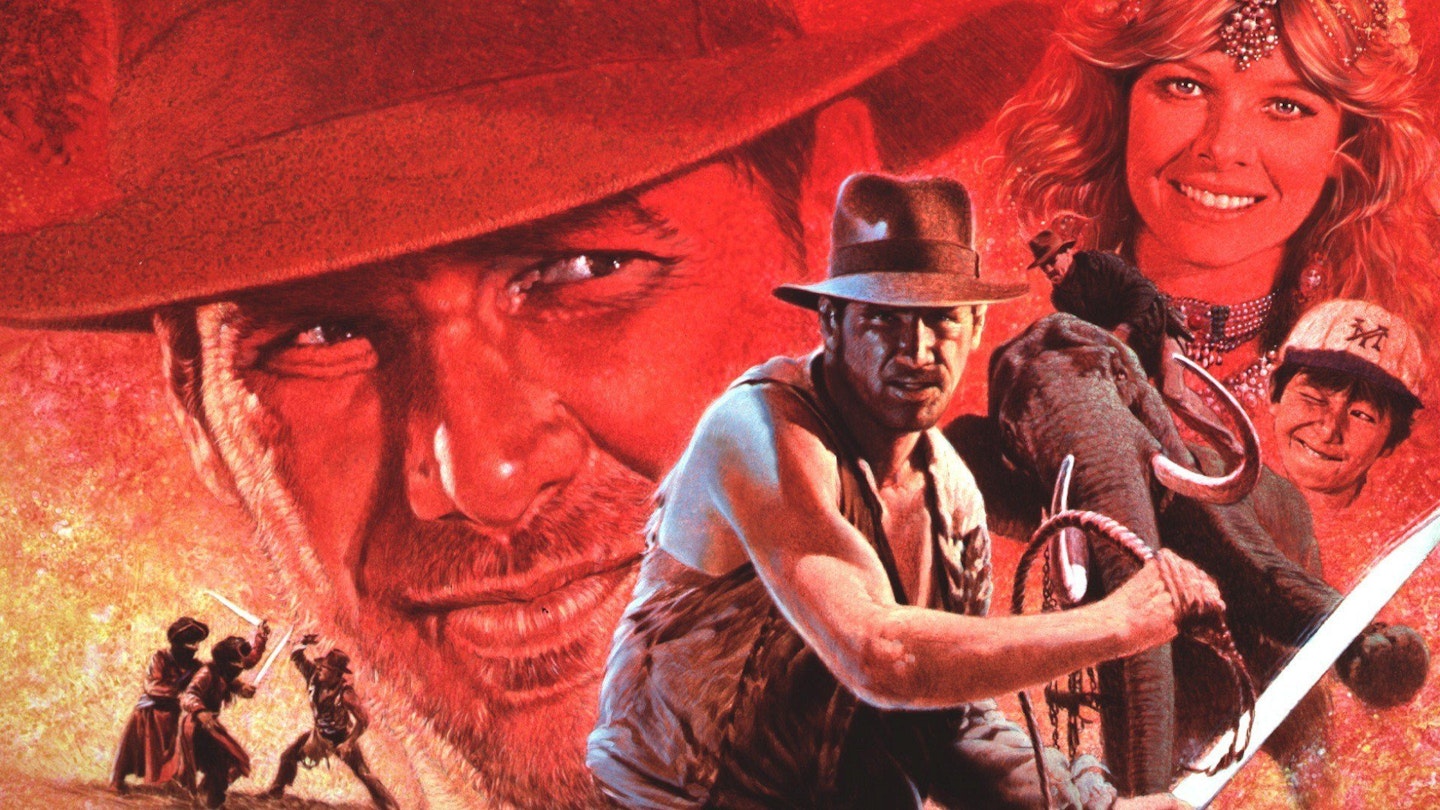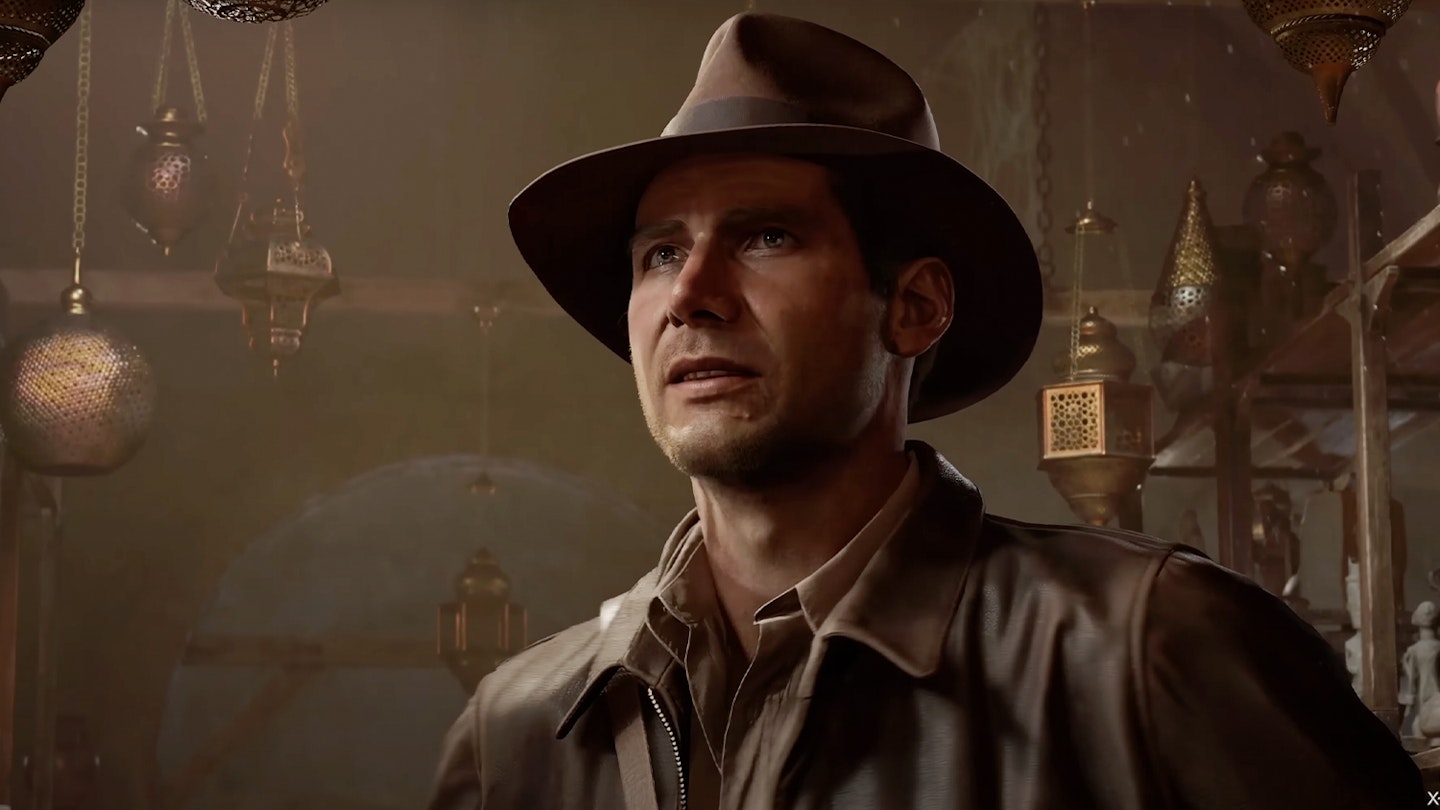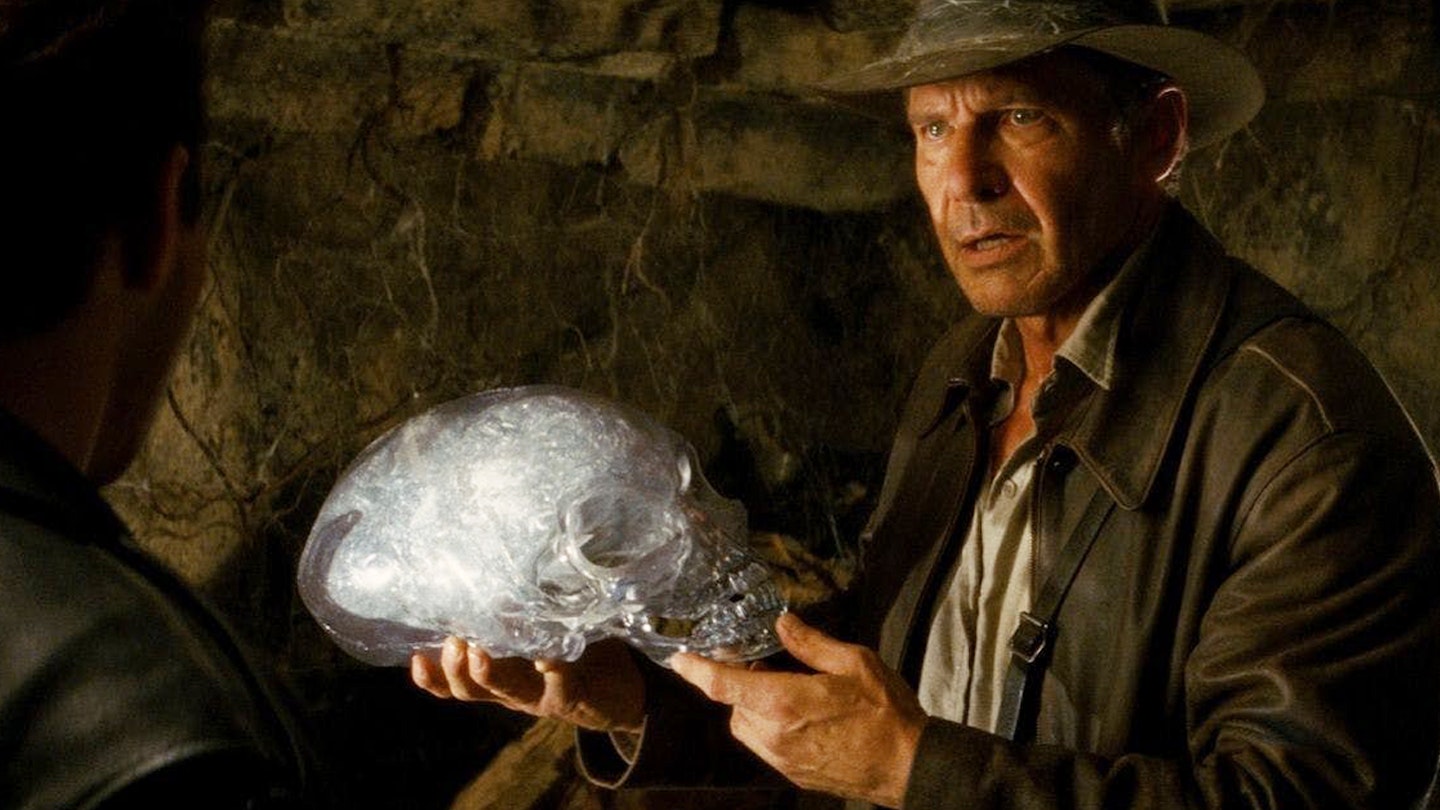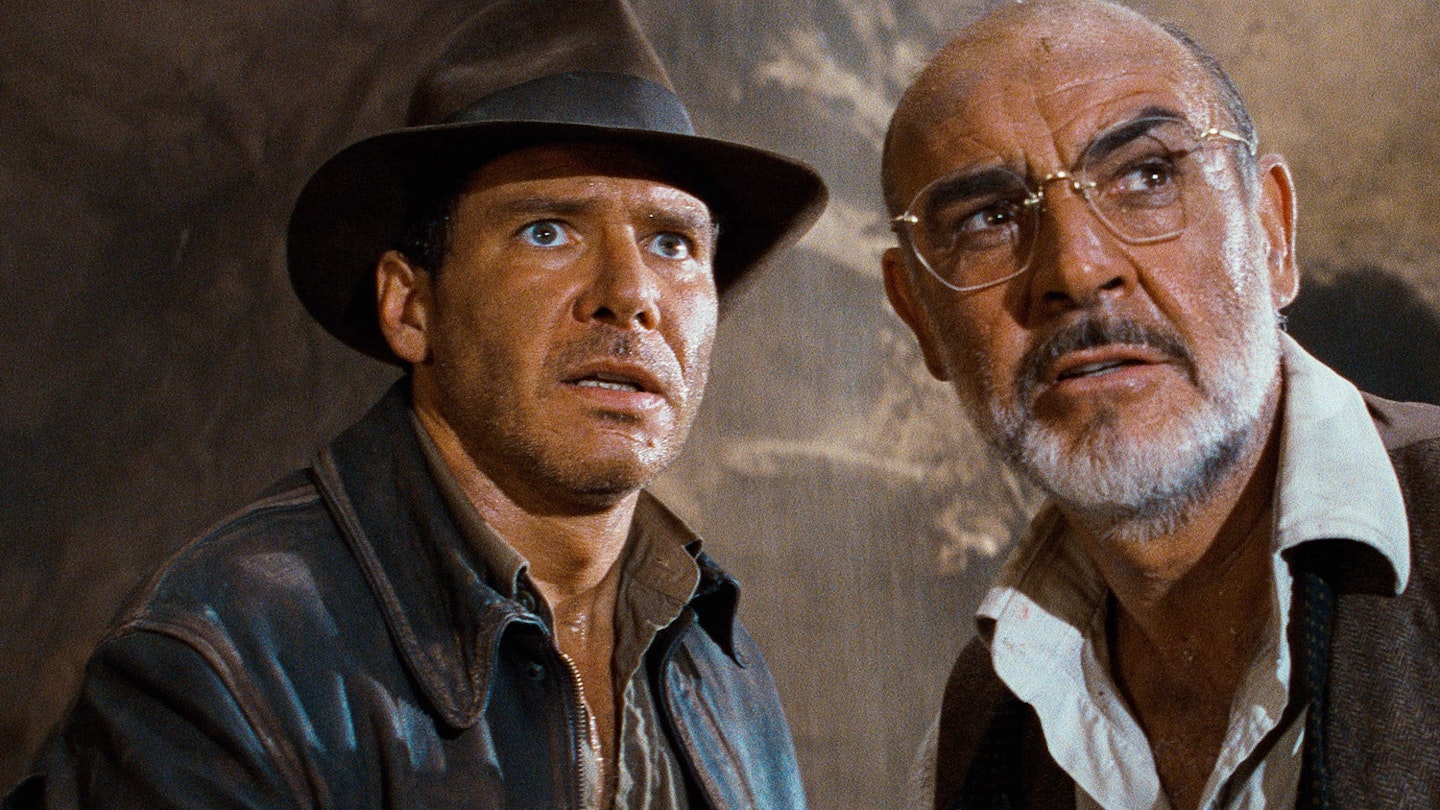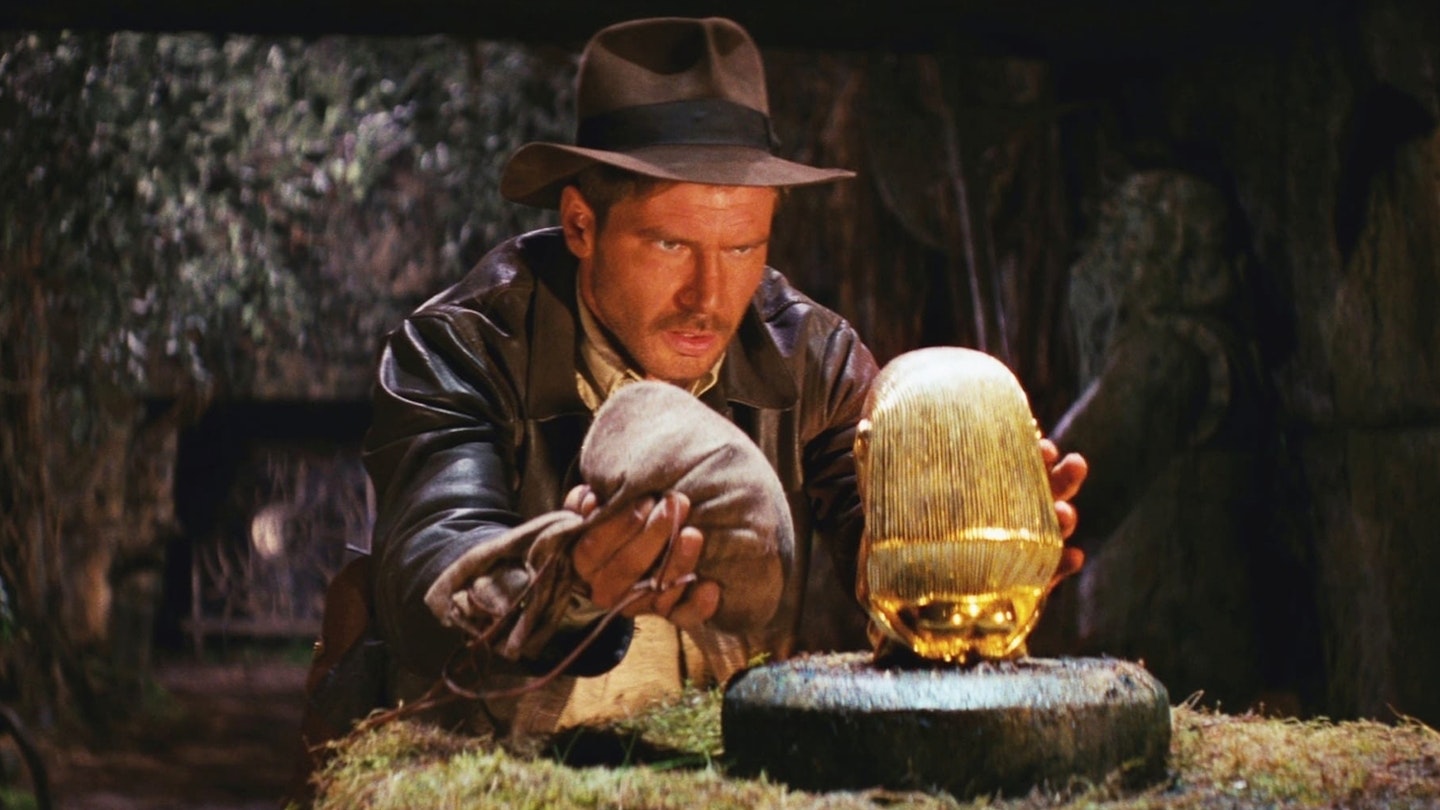After the phenomenal success of Raiders Of The Lost Ark, there was immediate pressure to milk the franchise for all it was worth. This was the stuff of serials, after all. What Indy did next was imperative. Spielberg and Lucas, however, if not exactly contemplating a change of direction, were committed to a tonal about-face. Raiders was sunlit, panoramic and up-beat, therefore Temple Of Doom, its sequel-prequel (set a year before Indy went in search of the Ark but still feeling like a progression of the character), would be dark, claustrophobic and a bit weird.
The opening is vintage Spielberg. Indy arrives in a tuxedo and we're in a Shanghai nightclub (Club Obi-Wan, for eagle-eyed in-jokers) not a trap-ridden tomb, and what ensues is a glorious tribute (and subversion) of a Busby Berkley dance number (at which the director had always
fancied trying his hand). It's a musical show Cole Porter's Anything Goes scattershot with gunfire, a poisoned Indy fumbling around for the vial of antidote and singer/love-interest Willie (Capshaw) lunging for a huge diamond, each being kicked out of reach by the panicking crowd. The story is folded between the hurtling action. An Indian village devoid of children and a stolen sacred stone lead to a dastardly Hindu cult called the Thuggee which aims to unite a series of occult Sankara stones (in true Hinduism such items were actually phallic symbols) and unleash hell.
In terms of the trilogy, you can view Raiders as focusing on Judaism, Last Crusade on Christianity and Doom on Hindu. Indy will go bad but be redeemed by his surrogate child/sidekick Short Round (Ke Quan) and save all the kiddiewinks enslaved in a mine, digging for another Sankara. Hat, whip and trademark grimace always present and correct. The reaction was vitriolic. Doom was slammed for its sadism, its meanness, its racial stereotyping. So galled was Spielberg by the negativity that he himself recanted: "I wasn't happy with Temple Of Doom at all," he
said in 1989. "It was too dark, too subterranean, and much too horrific. I thought it out poltered Poltergeist." Such was the outcry that this became one of the films that led to the creation of the PG 13 rating in the States. None of which stopped it becoming another massive hit.
Certainly the movie lacks a sufficently meaty villain Amrish Puri's Thuggee leader is fairly insubstantial and is simplistic in its portrayal of ethnic groups. But such sniping feels from the backlash. Spielberg's skill is so much more apparent: the frenetic edits, the delicious construction of stunts (Indy, desperate to extinquish a flaming boot, runs straight into a torrent of water about to wash him off a cliff), and the lurid, boyish detail (battalions of bugs, gooey monkey brains, and more sexual chemistry than either of the other two).
Enslaved children, jellied monkey brains, human sacrifice and the gouging-out of human hearts is exactly the stuff to satiate your average 12-year-old's goulish cravings. And given the tone Indy was originally pitched at a Saturday serial taken to extremes none of it felt that real. It was "movie" real; the delivery pitch perfect. Anyway, Doom has regained its vitality over time, now safely removed action-direction it's up there with his best work. It just never lets up. The surging chase in mine carts is daftly postmodern: a literal rollercoaster ride in a rollercoaster ride of a movie which ends in a literal cliffhanger.
The escape from Shanghai was a leftover from Raiders story meetings (then outside of the reach of the budget) resurrected to glorious effect for the follow on. Why leave the audience room to breathe? That would spoil the whole effect. The stuntwork alone is on a different plane and for all the darkness and mystic brew, Willard Huyck's script was upbeat and very funny. The presence of a youthful sidekick presents a fatherly side to Indy (played with unflagging, wry machismo by Ford), which works better than you'd imagine. Short Round (named after Huyck's dog) keeps up an I-told-you-so patter that puts paid to the potential mawkishness. Kate Capshaw came under heavy fire from the critics, so much so that she bailed out of the publicity tour. She was accused of adhering to the squealing, blonde cliche (a la Fay Wray), and while lacking the tomboy spirit of Karen Allen she is actually a sly parody of the cliche as is the whole movie. And she was far sexier than Allen or Alison Doody. Well, Steven thought so, he went on to marry her.
